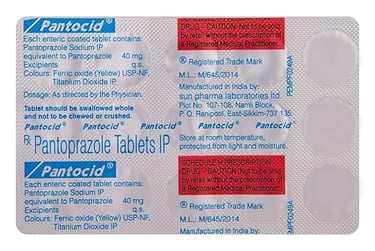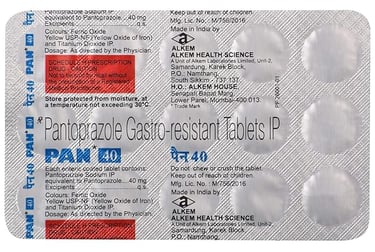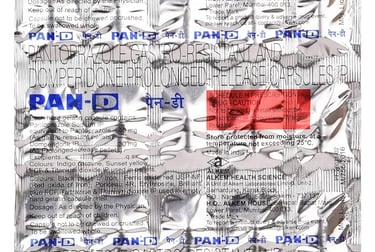Add your promotional text...
5 Must know things about Pantoprazole
Pantoprazole is a helpful medication for managing conditions caused by too much stomach acid. Understanding how it works, how to take it, and being aware of potential side effects and interactions can help you use it safely and effectively.
MEDICINES
8/26/20244 min read


Pantoprazole is a common medication that you might have heard about, especially if you or someone you know has issues with acid reflux or stomach ulcers. It belongs to a group of drugs called proton pump inhibitors (PPIs), which help reduce the amount of acid produced in your stomach. If you're prescribed pantoprazole or are considering taking it, here are five essential things you should know:
1. What Pantoprazole Treats
Pantoprazole is primarily used to treat conditions related to excessive stomach acid. This includes gastroesophageal reflux disease (GERD), where acid from the stomach frequently flows back into the esophagus, causing heartburn and potential damage to the esophagus. It's also used for stomach ulcers and Zollinger-Ellison syndrome, a rare condition where the stomach produces too much acid.
2. How Pantoprazole Works
Pantoprazole works by blocking a specific enzyme in the stomach lining that produces acid. By reducing the amount of acid, it helps heal acid-related damage in the stomach and esophagus, relieves symptoms like heartburn, and prevents ulcers from forming. It doesn't provide instant relief, but it's effective over time with regular use.
3. How to Take Pantoprazole
Pantoprazole comes in different strengths, typically 20 mg and 40 mg tablets, which your doctor will prescribe based on your specific condition and needs. It's usually taken once a day, either in the morning or evening, depending on your doctor's advice. It's important to take it as prescribed, ideally 30 minutes before a meal, because food can affect how well the medication works. Swallow the tablet whole with water—don’t crush or chew it, as this can affect its effectiveness.
If you miss a dose, take it as soon as you remember. However, if it's almost time for your next dose, skip the missed dose and continue with your regular schedule. Don't double up on doses to make up for a missed one, as this can increase the risk of side effects.
4. Potential Side Effects
Like all medications, pantoprazole can cause side effects, but not everyone experiences them. Common side effects include:
Headaches: This is one of the most frequently reported side effects, but it’s usually mild and manageable.
Diarrhea: Some people may experience loose stools or diarrhea while taking pantoprazole. If it becomes severe, it’s important to contact your doctor.
Stomach Pain: Mild stomach discomfort is possible, but if you experience severe pain, it’s best to seek medical advice.
Nausea and Vomiting: These symptoms might occur but are generally mild and temporary.
While these side effects are usually not serious, pantoprazole can also cause more significant issues, especially with long-term use (usually more than 12 weeks):
Vitamin B12 Deficiency: Pantoprazole can interfere with the absorption of vitamin B12, leading to a deficiency over time. This can cause symptoms like fatigue, weakness, and neurological changes.
Bone Fractures: Long-term use of pantoprazole, especially in higher doses, may increase the risk of fractures, particularly of the hip, wrist, or spine. This is more of a concern for older adults.
Kidney Problems: Some studies suggest that prolonged use of pantoprazole may be linked to an increased risk of chronic kidney disease. If you notice any changes in urination or have unexplained swelling, consult your doctor.
Infections: Because pantoprazole reduces stomach acid, which helps kill harmful bacteria, it might increase your risk of gastrointestinal infections like Clostridium difficile, which can cause severe diarrhea.
If you experience any unusual or severe side effects, it’s important to stop taking the medication and contact your healthcare provider immediately.
5. Interactions with Other Medications
Pantoprazole can interact with other medications, which might either reduce its effectiveness or increase the risk of side effects. Here are some important interactions to be aware of:
Warfarin (a blood thinner): Pantoprazole may affect how warfarin works, potentially increasing the risk of bleeding. If you take warfarin, your doctor may need to monitor your blood more closely.
Methotrexate (used for cancer and autoimmune diseases): Pantoprazole can increase the levels of methotrexate in your body, leading to toxicity. This interaction is particularly important for high-dose methotrexate treatment.
Clopidogrel (used to prevent blood clots): Pantoprazole might reduce the effectiveness of clopidogrel, which could increase the risk of heart attack or stroke. Your doctor may suggest an alternative PPI if you’re on clopidogrel.
Certain Antifungal Medications: Pantoprazole can decrease the absorption of antifungal medications like ketoconazole or itraconazole, making them less effective.
HIV Medications: Some HIV medications, like atazanavir, may be less effective when taken with pantoprazole because they require stomach acid to be absorbed properly.
Always inform your doctor about all the medications you're taking, including over-the-counter drugs and supplements, so they can make sure pantoprazole is safe for you. If your doctor prescribes new medication, remind them that you’re taking pantoprazole to avoid any harmful interactions.








